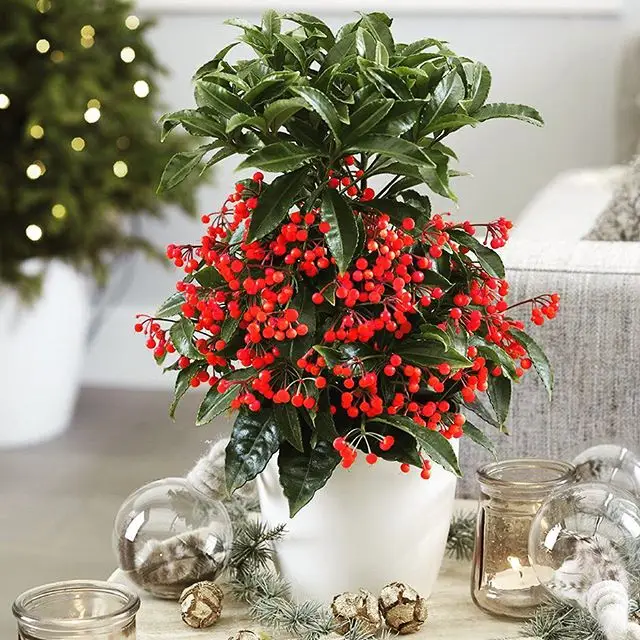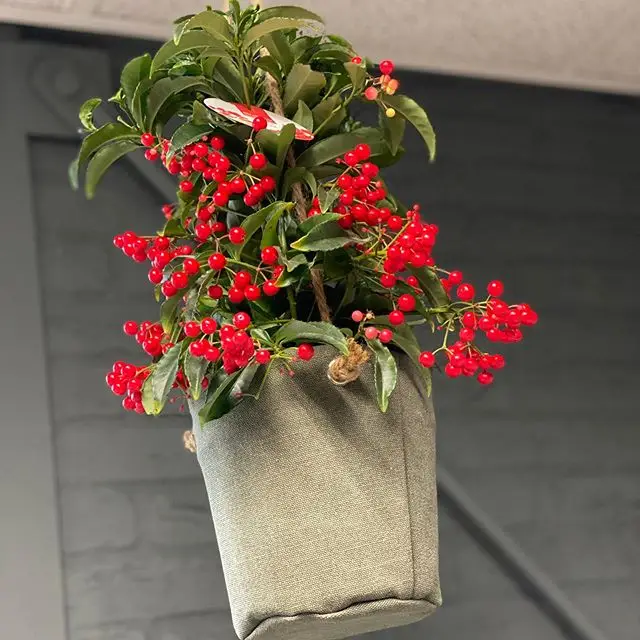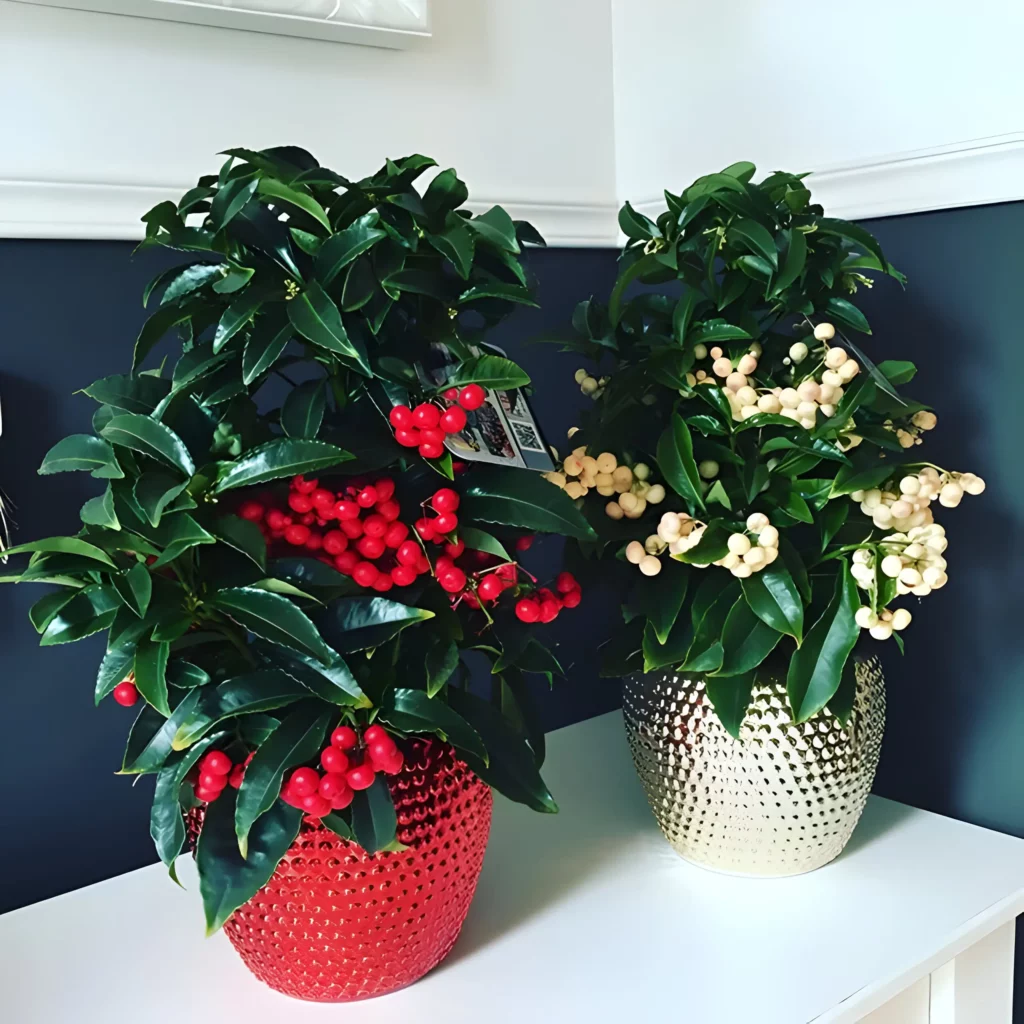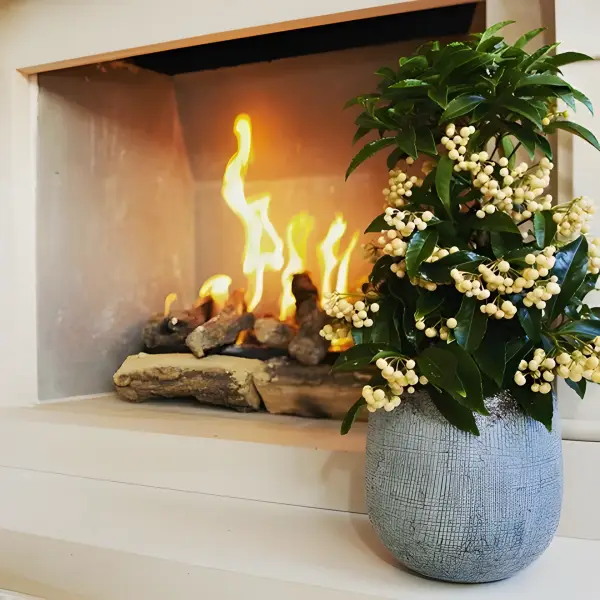Ardisia
| Name: Ardisia | Family: Primulaceae | Type Plant: Tropical evergreen shrub |
| Flowering time: Late spring to early summer | Best time to buy: Autumn/Winter | Max Height: 0.5 to 1 metre |
| Sun/Shadow: Partial shade | Wintergreen: Yes | Humidity: Prefers 60-80%; mist or use a humidifier |
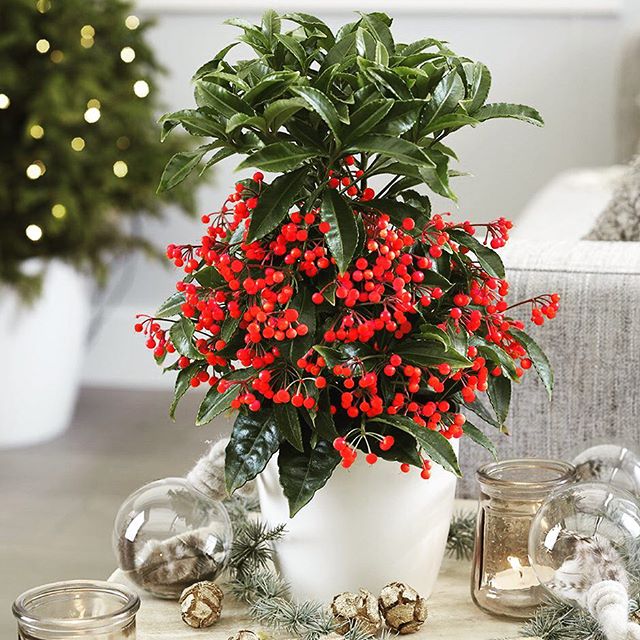
Origin
The Ardisia belongs to the Myrsinaceae family and originates from Southeast Asia. In this part of the planet, plants and bunches with berries symbolize wealth and fertility.
Characteristics
The Ardisia has a wide quantity of leaves underneath and in between the berries. These leaves, which have an average length of 15 centimetres, have a leathery, shiny dark green colour and curl around the edges.
The plant can reach a length up to 1 meter straight in the air.
Flowers of the Ardisia will have soft red or white colours but when they have grown into their berry form, they will be bright red.
Care
The Ardisia ideally likes to be in a damp soil, so make sure while caring for the plant that the soil doesn’t dry out. In addition to that, it will grow the best in a light spot, but not in direct sunlight.
Choose the place for the Ardisia wisely, because the plant doesn’t like to be moved after it’s been set down.
A temperature of around 20 degrees Celsius is perfect.
The plant has a high need for humidity, especially in winter. Regularly spraying the Ardisia is therefore very important, preferably with room temperature rainwater, because the plant can’t survive well with lime.
During the growing process, the Ardisia needs to be watered several times a week. When the plant starts to blossom, add some liquid plant food to it every 14 days.
Blooming time
The flowers of Ardisia will bloom in summer, and they will transform to berries during fall. When the berries are formed, they can keep flourishing until late winter.
If you want some realm and warmth in your home or garden, the Ardisia is the perfect plant to add to your collection.

